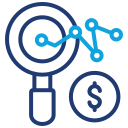A Day in the Life: From Batches to Real-Time
In traditional environments, you sip coffee while waiting for the overnight batch to finish and someone to email the file. In the cloud, KPIs greet you instantly, refreshed continuously, so you start with trends, not tasks. Tell us: how long do you currently wait for your first useful report?
A Day in the Life: From Batches to Real-Time
Instead of hand-merging spreadsheets, cloud forecasting lets you run driver-based scenarios in minutes, preserving assumptions and audit trails. Traditional processes often stall when one workbook breaks. Share your best (or worst) spreadsheet recovery story—we have all been there.







